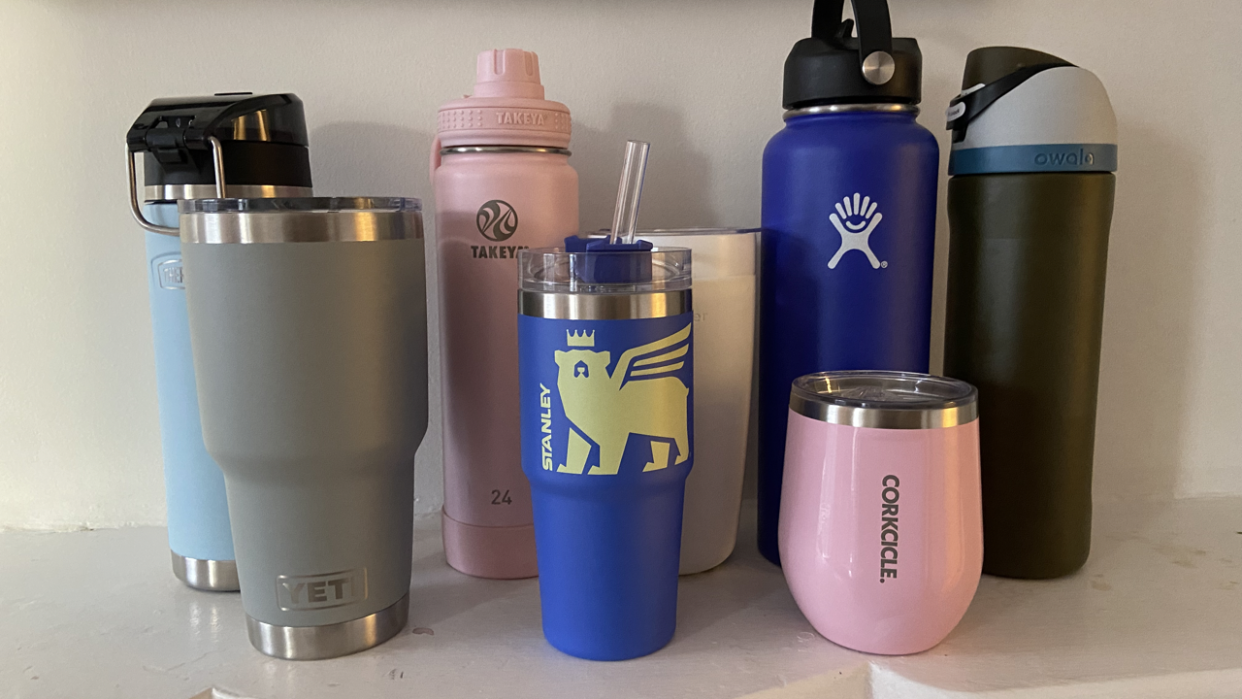I Compared The Stanley To A Bunch Of Other Insulated Cups And The Results Were Shocking

"Hearst Magazines and Yahoo may earn commission or revenue on some items through these links."
It’s no secret that the United States is in the depths of Stanley fever. People are fighting over limited-edition tumblers. Resale prices are through the roof. Students are allegedly being bullied for carrying off-brand cups. It has prompted many to wonder if the insulated 40-ounce Quenchers are actually worth the hype. Is there something about Stanley that sets it above the rest?
The science behind it is sound. Vacuum insulation allows liquids to retain their starting temperature for a prolonged period of time. This means hot drinks will stay hot, and iced drinks can literally survive car fires without melting the cubes. Since the technology was invented in the late 19th century, brands have bubbled up across the market to offer their own temperature-regulating vessels.
Stanley is currently the darling of the insulated tumbler world, but plenty of other brands also promise to keep beverages cold. If you’re like us, you’ve wondered if any of these cups do a better job than others. That’s why we decided to put them to the test and see how each of them perform.
How The Experiment Was Conducted
For this experiment, we rounded up insulated cups from the following brands: Stanley, Yeti, Hydro Flask, Corkcicle, Owala, W&P, Takeya, and Thermos. Due to limited inventory, our tumblers came in multiple shapes and sizes. For example, the only Stanley available at our local Target was a small size meant for children.

To conduct our test, we filled each tumbler with 500 ml of 38°F water. We placed the lids on them and set them aside. And then we waited. Most of these brands claim to keep water cold for around 24 hours, but we abbreviated our test to six hours.
Over the course of our experiment, the temperature of the water in each tumbler started to rise, albeit very slowly. The water in our tumbler test stayed cold despite increasing a few degrees over time. Once the six hours were up, we grabbed our instant read thermometer and compared the temperature in each cup.
The Results
The verdict? Stanley isn’t any better than any of the other tumblers.
In fact, there’s no brand that’s drastically better than the other. The difference in temperatures for the water in each cup only varied by less than half a degree. If we want to get down to the decimal, The Yeti tumbler yielded the coldest results at 40.8°F. But since we conducted this test in a kitchen instead of a laboratory, the temperature discrepancies can be chalked up to other minor environmental variables.
What we learned from this test is that the only advantage Stanley cups have is the clout. If you've been witnessing Stanley mania and have wondered if it's worth swapping your cup for a Quencher, the answer is no. It's not really worth it.
You Might Also Like

